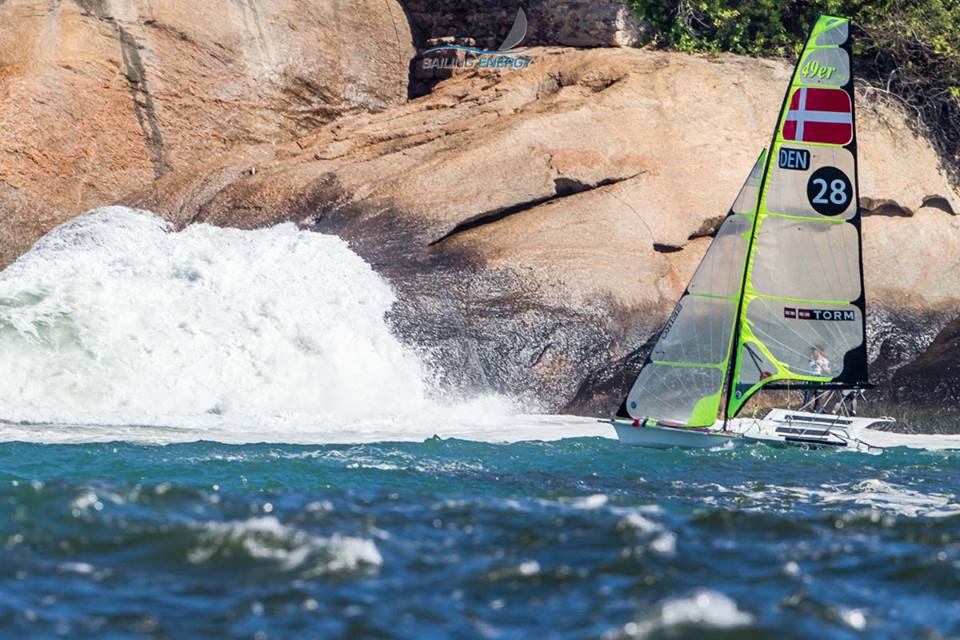Teams are approaching the 2015 Rio Test Event in two very different manners. There are some federations that are treating the event as a full examination of their teams potential, including evaluation of teams performances with selection consequences. For other teams it is merely a test and an opportunity to learn about the location, fleet, and city.
The contrasting approaches create an interesting paradigm of an event. For many of the worlds top sailing nations, they subscribe to recent statistics from London 2012 where 18 of 20 medalists from the 2011 test event went on to medal one year later. Some teams have enormous support staffs on hand, including meteorologists, team chefs, physiotherapists, doctors, and sports physiologists, not to mention coaching staffs and team leaders. Other teams have their training partners out in the RIB so the whole squad can learn and are enjoying the Rio lifestyle of mountain climbing and nightlife.
All teams will compete hard on the water but what is interesting is how the pressure and focus change how teams treat situations. While a casual team may let an infraction go, a serious team may take the situation to a protest. Where a casual team may be relaxed at a missed shift and look for the next, a pressure team may get stuck looking at the results. It is far more typical for all teams to focus on the same regattas than to have such different approaches.
Rio is also a different spot than Weymouth was four years ago. Nathan Outteridge described to the Australian recently, Rio is a different place to sail than Weymouth was, “it’s understanding the weather and the currents which are quite tricky as compared to London.”
In Weymouth, boat speed, starting, and strong downwind speed could result in consistent finishes and take a championship. As always, sailing requires all those skills, but the shiftiness of Rio’s wind and changeable currents also require top level adaptation to ever changing conditions, and plenty of patience. A consistent scoreline for any team would be a surprise on these courses.
The Test Event begins under a back drop of continuing controversy regarding pollution levels in the Rio waters. The Rio 2016 officials prepared a press conference describing their extensive efforts and have been 100% open in their working on the situation, including having already cleaned up 8 of the 17 highest polluting sources to Guanabara Bay. However, the numbers are staggering with 25 meters cubed per second, so 25,000 liters of raw sewage entering Guanabara Bay each second currently. Most disturbing is the three open sewer lines still draining into the Marina De Gloria, the small area where the sailors launch. The construction is 50% complete on blocking that sewage for 2016 but that does not protect the sailors currently.
Sailors have been warned to wear shoes at all times and shower thoroughly and completely immediately after exiting the water due to the sewage situation in the marina. The local are using bio remediation, which is basically introducing good bacteria to counter the bad bacteria from the sewage within the marina area. However, the activity against bacteria does now counter the risk of viruses, covered by the AP two weeks ago. Since the AP report, ISAF agreed to start testing for viruses but then changed their minds once they figured out the WHO does not have a complete standard. Breaking news now is that the WHO advised to continue testing, and ISAF will now have to decide how to approach the continuing issues.
Most sailors are putting on a brave face, as reported by the New York Times, since there are few other options available to them. Should illness strike personally they may change their tune.
Meanwhile, at the regatta center at least two 49er teams have been taken ill in recent days though both have now recovered in time for the start of racing. Should a top team in contention fall ill from any of the classes it will be interesting to hear the responses from local and international officials.
On the wind front, Rio has outdone itself in the lead up to racing, with two weeks of fantastic conditions. Higher than normal temperatures and a stable high pressure system have resulted in stronger winds than expected, up to 15 knots inside the bay and over 25 knots occasionally on the outside courses. Other than a single day of system wind expected should conditions hold the sailors will be very pleased. The garbage collection systems have also been in place, with dams and boats blocking and collecting trash. There has been no rain for three weeks, keeping the water cleaner. Should the system on Wednesday have precipitation it will be a stern test for clean up crews as the favelas empty of trash into Guanabara Bay.







